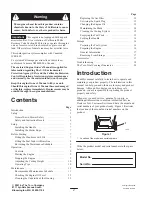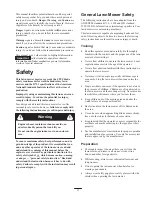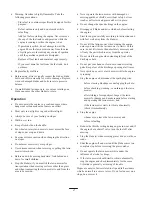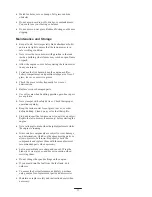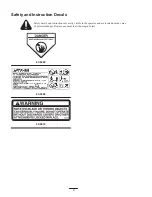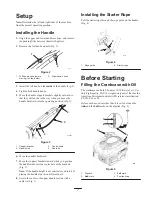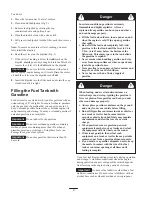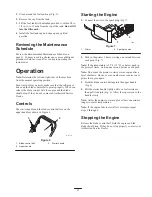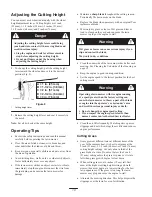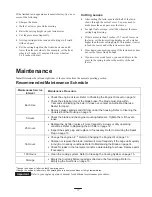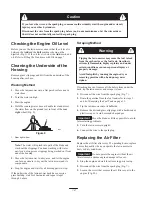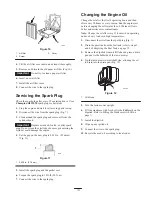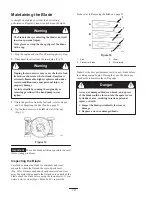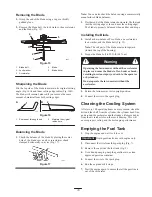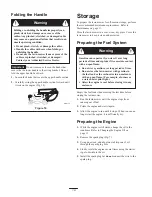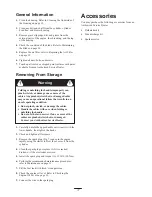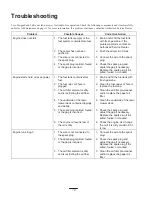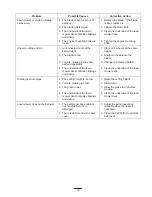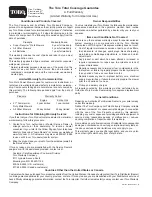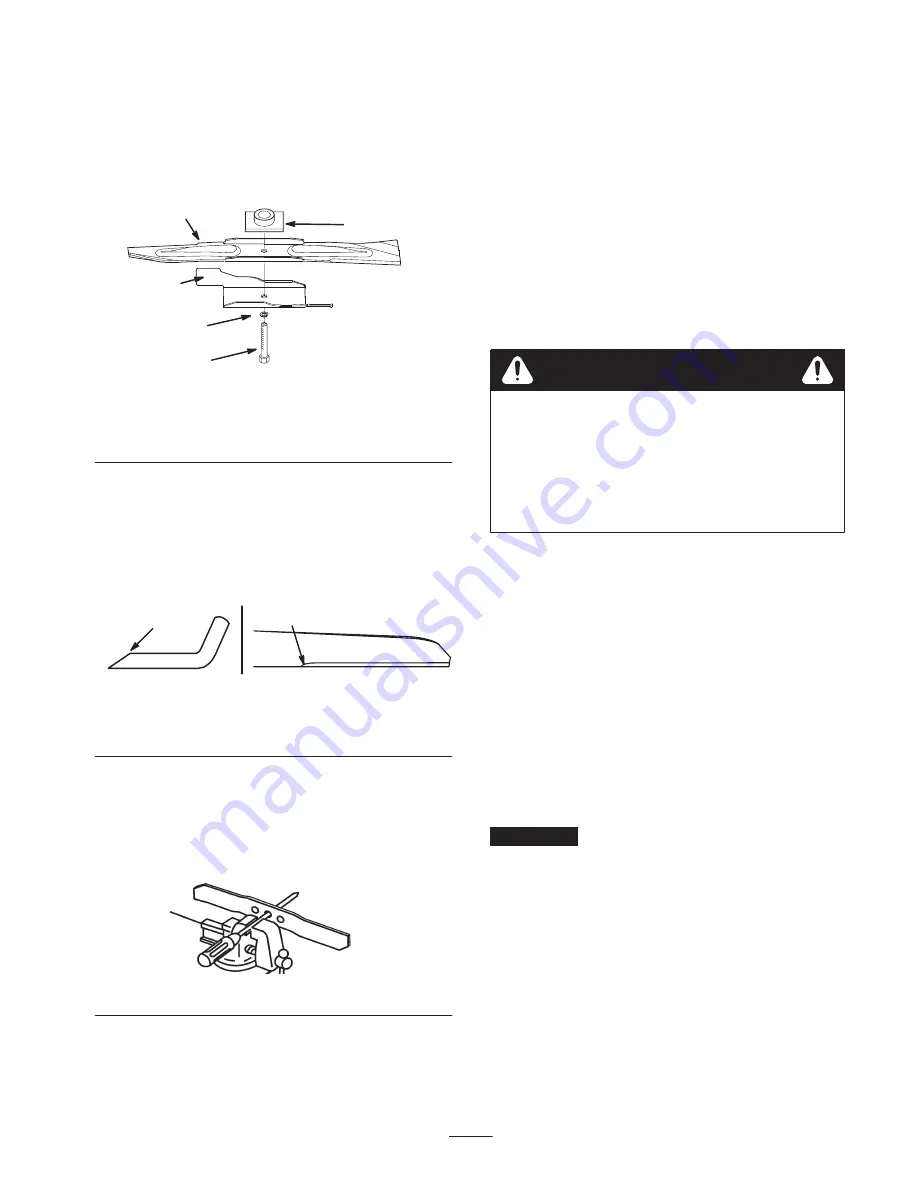
15
Removing the Blade
1. Grasp the end of the blade using a rag or a thickly
padded glove.
2. Remove the blade bolt, the lock washer, the accelerator,
and the blade (Fig. 15).
1627
1
2
3
4
5
Figure 15
1.
Blade bolt
2.
Lock washer
3.
Accelerator
4.
Blade
5.
Blade driver
Sharpening the Blade
File the top side of the blade to maintain its original cutting
angle (Fig. 16A) and inner cutting edge radius (Fig. 16B).
The blade will remain balanced if you remove the same
amount of material from both cutting edges.
153
1
m4783
2
A
B
Figure 16
1.
Sharpen at this angle only
2.
Maintain the original
radius here
Balancing the Blade
1. Check the balance of the blade by placing the center
hole of the blade over a nail or screwdriver shank
clamped horizontally in a vise (Fig. 17).
1007
Figure 17
Note: You can also check the balance using a commercially
manufactured blade balancer.
2. If either end of the blade rotates downward, file that end
(not the cutting edge or the end near the cutting edge).
The blade is properly balanced when neither end drops.
Installing the Blade
1. Install a sharp, balanced Toro blade, an accelerator, a
lock washer, and the blade bolt (Fig. 15).
Note: The sail part of the blade must point upward
(toward the top of the housing).
2. Torque the blade bolt to 50 ft-lb (68 N
m).
Operating the lawn mower without the accelerator
in place can cause the blade to flex, bend, or break,
resulting in serious injury or death to the operator
or bystanders.
Do not operate the lawn mower without the
accelerator.
Warning
3. Return the lawn mower to its upright position.
4. Connect the wire to the spark plug.
Cleaning the Cooling System
After every 100 operating hours or every season, clean the
dirt and the chaff from the cylinder, the cylinder head fins,
and around the carburetor and the linkage. Remove debris
from the air intake slots on the recoil housing. This will
ensure proper cooling and the best engine performance.
Emptying the Fuel Tank
1. Stop the engine and wait for it to cool.
Important
Drain gasoline from a cold engine only.
2. Disconnect the wire from the spark plug (Fig. 7).
3. Remove the cap from the fuel tank (Fig. 5).
4. Use a hand pump to pump the gasoline into a clean
approved gasoline container.
5. Connect the wire to the spark plug.
6. Run the engine until it stops.
7. Start the engine again to ensure that all the gasoline is
out of the carburetor.


